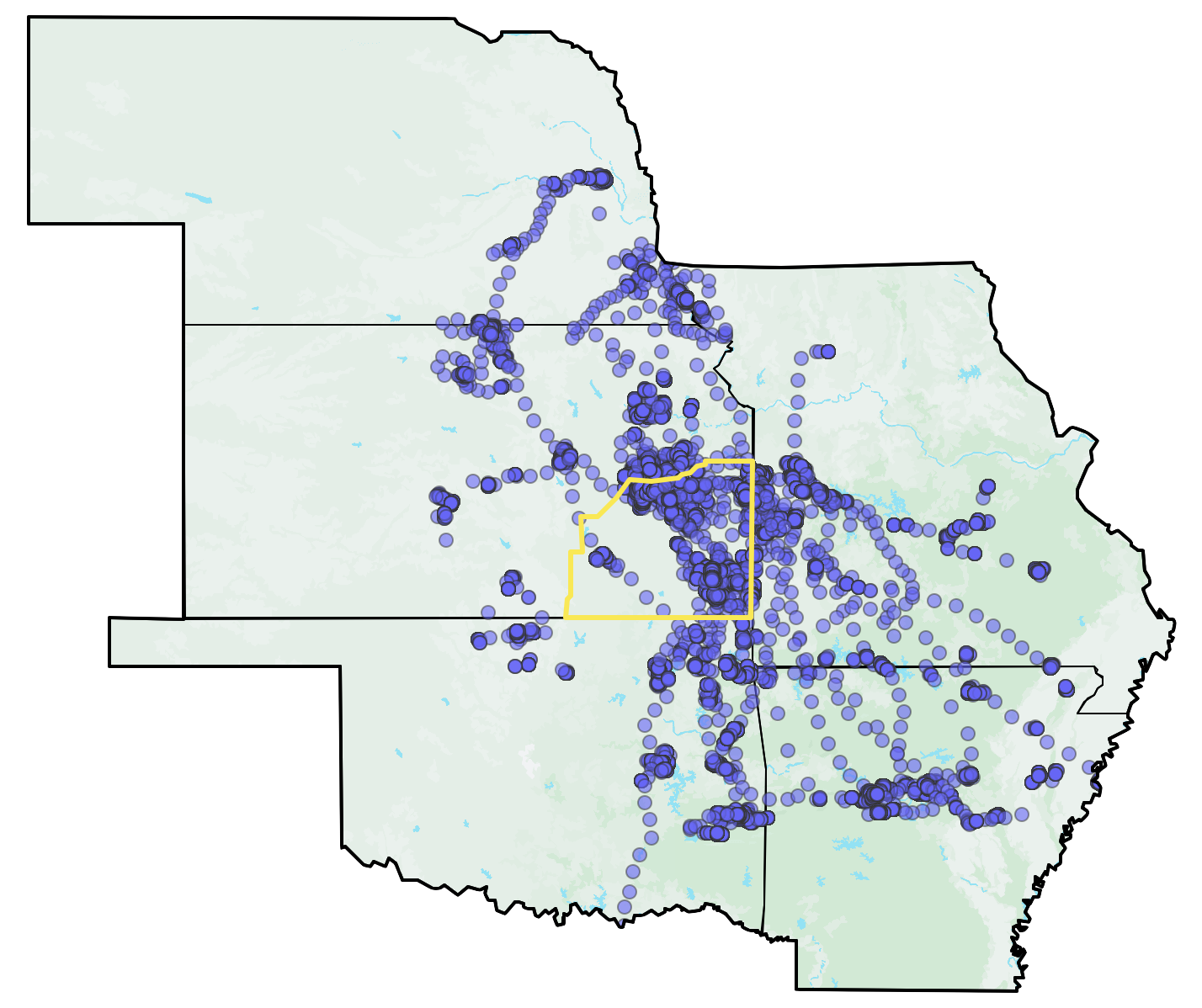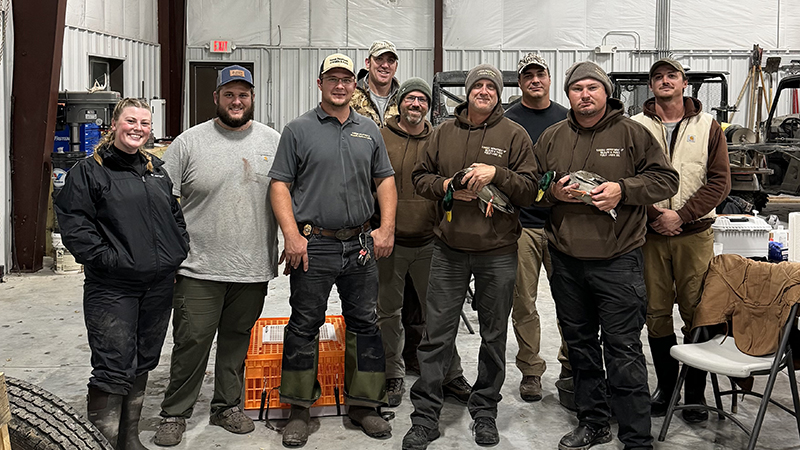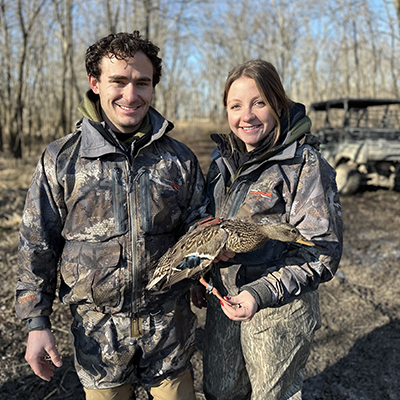
Southeast Kansas Mallard GPS Project
About the Project
Project Summary
Kansas is an important mid-latitude Central Flyway state for migrating and wintering waterfowl. Bi-weekly surveys indicate that the Southeast duck zone supports annual peaks of >100,000 mallards and sum counts of over 1,000,000 ducks during the fall and winter. Mallards make up more than half of all duck harvest within Kansas each year; the southeast zone accounts for about 23% of the state's annual mallard harvest.
Currently, no information exists on mallard wintering ecology in Southeast Kansas. GPS transmitters can provide fine scale information on mallard movement and behavior, we are deploying these devices on mallards within Southeast Kansas to investigate their ecology in collaboration with the Kansas Department of Wildlife and Parks, U.S. Geological Survey Northern Prairie Wildlife Research Center, U.S. Fish and Wildlife Service, and University of Nebraska — Lincoln.
During our first field season in 2023, we captured and leg-banded 728 mallards during November – December and deployed GPS devices on 54 of them. We will be capturing mallards within Southeast Kansas during the fall and winter of 2024 and 2025.

Capturing ducks in Southeast Kansas during December 2023
Project Objectives
Our objectives are to investigate mallard:
- Habitat Selection
- Local and Regional Movements
- Fine Scale Movement and Use Patterns
- Spring Migration Ecology
This is a general overview of our project’s objectives, which are all focused on mallards that are captured during the fall and winter in Southeast Kansas. For a more complete explanation of our objectives, please contact us.
Expected Benefits
This research aims to provide information that could directly influence waterfowl management practices in Kansas and its implications will likely be applicable to other nearby states. This research aims to inform duck season dates, duck hunting zones, and waterfowl management practices within Southeast Kansas. We expect that this project will also contribute to research on the midcontinent mallard population at large as well.

About the GPS Transmitters
Our GPS transmitters weigh approximately 20 grams and are attached to the ducks back, like a backpack. These devices have a solar panel on them that allows them to re-charge throughout the duck’s annual cycle. Under ideal conditions, we collect a GPS location every 15 minutes for each deployed mallard and these locations are uploaded to a database via cellular communication every 12 hours. We also collect accelerometer readings alongside our GPS locations, these sensor readings help us to determine what behaviors the duck is undertaking (e.g. dabbling, resting, nesting).
Learn more about how you can DONATE to the project.
